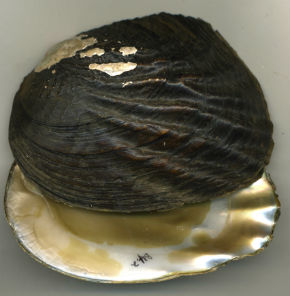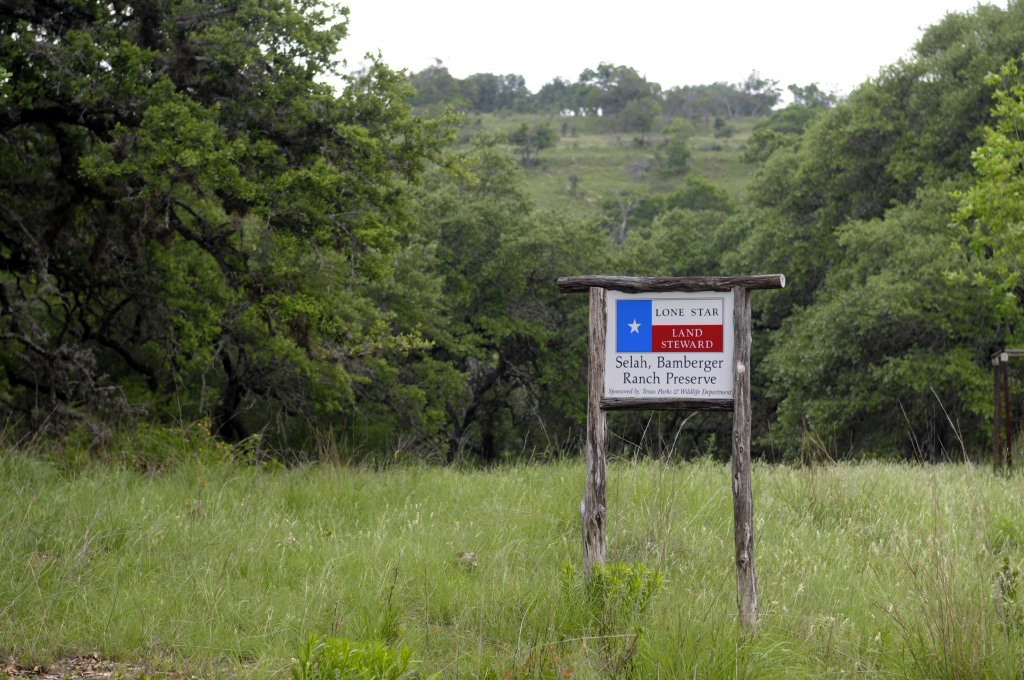March 28th, 2013

Sheryl Smith Rodgers, from www.commanderben.com
This is Passport to Texas
They say you never forget your first love. For writer her first love had eight legs.
07 – Spiders are my first love, and from there I grew into plants and animals.
Eager to fully understand the natural world around her, Smith Rodgers completed Texas Master Naturalist training.
20 – I’m with the Highland lakes chapter, which is based out of Burnet. So you learn about your own ecosystems in your region. I’m learning about the plants that are indigenous to this area. Whereas, if you live on the coast, you’ll be learning about those kinds of plants. So, we’re all learning what’s important to our area.
Trainees learn about living things in their ecosystem, as well as their region’s geology, hydrology and more. After receiving certification, Smith Rodgers says Master Naturalists volunteer in their communities where needed.
23 – Volunteers go to ranches and survey the plant species, and they offer land management advice. In a city, volunteers might go into a city park and create a butterfly garden. For instance, here in Blanco – at Blanco State Park – the Master Naturalists help put on program every May for third graders. They do so many different things [laughs].
Tomorrow: Learn how to become a Texas Master Naturalist.
For Texas Parks and Wildlife…I’m Cecilia Nasti.
Posted in Conservation, Education | Comments Off on Conservation: Master Naturalist, 1
March 27th, 2013

Washboard mussel
This is Passport to Texas
Texas Parks and Wildlife is recruiting citizen experts to volunteer for biological inventory teams to monitor four species groups on private lands.
17—We’re wanting to put together teams of experts throughout the state to work within each wildlife district to monitor four groups of species: one for herps, one for plants, one for invertebrates and then, also, one for birds.
Biologist and program coordinator, Marsha May, says the data Biological Inventory Teams collect will become part of the Texas Natural Diversity Database.
18—That database includes information on rare species throughout the state—their locations—and that information is used by various entities. Well, that database has a lot of holes; we’re hoping to fill in a lot of those holes with information collected by these volunteers.
Anyone with expertise with the previously mentioned species groups may volunteer. Individuals will participate in an orientation, and may choose the counties they wish to work.
12—We would have a training to give them information on what is expected, what type of monitoring that would be required. The protocol involved each group of species.
Find complete details on volunteering for biological inventory teams on the Texas Parks and Wildlife website under Texas Nature Trackers.
That’s our show for today…with support from the WSFR program…providing funding for a variety of conservation projects throughout Texas.
For Texas Parks and Wildlife…I’m Cecilia Nasti.
Posted in Conservation | Comments Off on Conservation: Biological Inventory Team, 2
March 26th, 2013

Image: CHASE A. FOUNTAIN – TPWD ©2009
This is Passport to Texas
With the help of biological inventory teams of citizen scientists, Texas Parks and Wildlife plans to monitor the plants… herps…
02—Which are the amphibians and reptiles…
…birds and invertebrates…
05—…and that would mainly be: butterflies, dragonflies, beetles, bumblebees and such….
…in Texas’ 8 wildlife districts; biologist Marsha May oversees the program. She says she’s recruiting experts statewide to join these monitoring teams.
24—Mostly, we’re looking at hobbyists; people who have joined herp societies. They know their herps. As well as birders. There’s people involved in Audubon society’s that know their birds. So those are the types of people [as well as those with expertise in native plants and invertebrates] that we’re looking for, for these projects.
These biological inventory teams will monitor species on private land.
17—So, my plan is to start with organizing teams throughout the state. And once we get good, solid teams in place, then we’re going to go out there and open it up to the landowners, and let them know that these teams are available to come and do surveys on their property.
Knowing what’s on the land helps landowners becoming better stewards. Fine more information about the Biological Inventory Program on the Texas Parks and Wildlife website under Texas Nature Trackers. Our show receives support from the Wildlife and Sport Fish Restoration Program.
For Texas Parks and Wildlife…I’m Cecilia Nasti.
Posted in Conservation | Comments Off on Conservation: Biological Inventory Teams, 1
March 25th, 2013

Image by Darcy Rocha, Rockwall, Texas
This is Passport to Texas
Two state parks will be open for hunting on March 30th. Our State park Guide, Bryan Frazier, tells us what hunters hope to bag…or in this case: basket.
60—Some of our parks are having Easter Egg Hunts the day before Easter, which is Saturday, March 30th.Those are both in east Texas. It’s Cooper lake State Park, which is north of Interstate 30, east of Dallas, and Martin Dies, Jr. State Park, which is in southeast Texas. And both of them will divide the kids by age, where there will be more egg hunting and candy and things for the younger kids. And then, the older kids will have more prizes and games. They’re safe places to bring your kids. Cooper Lake State Park is waiving the entrance fee for this event. So, check our state parks website; there’s an events section there and calendar – and you can find out more about that at www.texasstateparks.org. But, we’re right now in the beginning of the outdoor visitation season for most people – and there’s a reason for that. The weather’s getting good and warm – it’s a beautiful time to be out in the parks. And Easter is just a precious time for small children, especially, to get outdoors, hunt those Easter Eggs, and be with your family outside.
Thanks, Bryan.
That’s our show for today…with funding provided by Chevrolet, supporting outdoor recreation in Texas; because there’s life to be done.
For Texas Parks and Wildlife…I’m Cecilia Nasti.
Posted in State Parks | Comments Off on State Parks: Easter Egg Hunts
March 22nd, 2013

TPW Magazine April Cover
This is Passport to Texas
April is a gorgeous month in the state. The blue skies and mild weather always gets Texas Parks and Wildlife Magazine Editor Louie Bond thinking about the outdoor places she’d like to be.
61— This inspired our first article a couple of years ago called best of Texas Naturally. And that first year we just did staff picks. Last year we decided to expand that a little and we went throughout Texas Parks and Wildlife Department and asked for their nominations for their favorite natural things in Texas. So, this year, we’ve spread our circle even a little wider, and we’ve gone to the natural partners for Texas Parks and Wildlife. We have one called the best historical font, that’s not Times Roman, nominated by Andy Sansom, former Executive Director of the agency. And he nominated Aquarina Springs Resort, which is now called the Meadows Center for Water and the Environment. Another one is from another former TPWD guy, Larry McKinney at the Hart Institute. And he nominated the Devil’s River as The Best River to Know Where – which is the K-N-O-W kind of know where. So, you get where we’re going with this. And it’s all meant to inspire you for some new places to go and visit in this great state ours. So, we hope April inspires you to get out the rest of the year and enjoy Texas.
Thanks, Louie.
The April issue of Texas parks and Wildlife Magazine is on newsstands now.
For Texas Parks and Wildlife…I’m Cecilia Nasti.
Posted in TPW Mag | Comments Off on TPW Magazine April Preview






 Passport to Texas is a
Passport to Texas is a  Passport to Texas is made available by:
Passport to Texas is made available by: